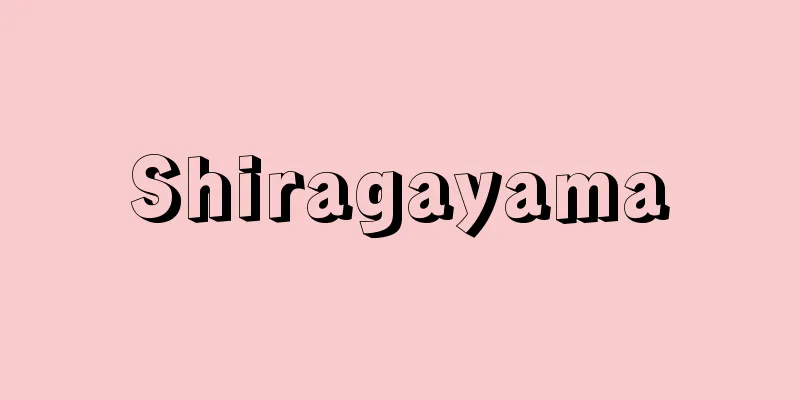Rokuonji Temple

|
This temple is located in Kinkakuji-cho, Kita-ku, Kyoto City. It is called Kinkakuji and is widely known along with Ginkakuji (Jishoji). It is called Hokuzan and belongs to the Shokokuji school of the Rinzai sect of Buddhism. The principal image is the Bodhisattva Kannon. The Saionji family's mountain villa, Kitayamadono, was originally located here, but in 1397 (Oei 4), the third Ashikaga Shogun, Yoshimitsu, inherited it and built the Golden Pavilion and other buildings, which is how the temple got its start. After Yoshimitsu's death in 1408, his son Yoshimochi, in accordance with his will, converted it into a Zen temple, invited Muso Soseki to be the founder, and gave the temple its current name. The temple's name comes from Rokuya-on, the place where Shaka gave his first sermon. At the time, it was a spectacular sight, with Shiunden Hall, Tenjo-kan (Kugyo-kan), Kyohoku-ro, Kinkakuji, Sorihashi, Hotoku-den, Tenkyokaku, Izumi-den, Goma-do, Senpo-do, Shari-den, Mido, Jizo-do, Kanun-tei, pagoda, rinzo, sho-ro, main gate, and Shisoku-mon gate, but later Shiunden Hall and Tenkyokaku were moved to Nanzen-ji, Tenjo-kan to Kennin-ji, and Senpo-do to Toji-ji. During the Bunsho period (1466-1467), the Komidō Hall burned down, and during the Onin War (1467-1477), many buildings, including the Hōtokuden Hall, were destroyed. However, starting with the rebuilding of the Fudo Hall during the Tensho period (1573-1592), the buildings were gradually repaired and restored, including the construction of the Sekkatei and the Hojō, and the major repairs to the Kinkakuji were carried out between 1904 and 1906 (Meiji 37-39). The temple currently includes the Kinkakuji, Hojō (main hall), Fudo Hall, Daishoin, and Sekkatei, and in the Hojō there are statues of Muso Soseki and Ashikaga Yoshimitsu, in addition to the Kannon statue, which is the principal image of the temple. The central Kinkakuji is a three-story building that remained exactly as it was when it was first built, but was destroyed by arson in 1950 (Showa 25). The current building was rebuilt in the same style in 1955. The first floor is modelled on the Shinden-zukuri style of the late Heian period, the middle floor on the samurai-style of the Kamakura period, and the upper floor on the Buddhist hall-style in the Chinese style, with variations on each floor, and the interior and exterior are all lacquered with gold leaf applied, but after more than thirty years the lacquer had peeled off and become severely damaged, so a large-scale restoration project began in February 1986, and in October 1987 the temple was restored to its original appearance. The garden is a Special Historic Site and a Special Place of Scenic Beauty. In 1994 (Heisei 6), Rokuon-ji Temple was registered as a World Heritage Site (World Cultural Heritage. Kyoto's cultural assets include 17 shrines, temples and castles, including Kiyomizu-dera). [Toshiaki Hirai] Kitayama Daito PagodaThis refers to the seven-story pagoda that is said to have been built by Ashikaga Yoshimitsu at Kitayamadono. During the Muromachi period, the seven-story pagoda (approximately 109 meters tall) at Shokoku-ji Temple, built by Yoshimitsu, was the tallest pagoda in Japan. This pagoda burned down in 1403 (Oei 10), so it is believed that a pillar-raising ceremony was held in 1404 at Kitayamadono, where the current Kinkaku-ji Temple stands, and a pagoda of a similar height to the one that burned down was built. However, apart from a record that it was burned down by lightning in 1416 before it was completed, no concrete historical documents had been found that indicated its location or the condition of the building at the time. In 2016, the Kyoto City Archaeological Research Institute announced that a fragment believed to be part of the sorin (a spire) decorating the spire that protrudes from the top of the pagoda had been excavated. The largest fragment was 37.4 cm wide, 24.6 cm high, and 1.5 cm thick. It is believed to be part of the nine rings that make up the pagoda, and is made of bronze plated with gold. Furthermore, when the ancient documents preserved at Toji Temple (Kyoogokokuji Temple), Toji Hyakugo Monjo, were examined based on the results of the excavation, a section was found that describes the specific preparations for the start of construction prior to the pillar erection ceremony. From a documentary perspective, the possibility that the Kitayama Great Pagoda actually existed has become strong. [Editorial Department, May 19, 2017] "Ancient Temple Pilgrimage: Kyoto 20 - Kinkakuji Temple and Ginkakuji Temple" (1977, Tankosha) ▽ "Japanese Art 153: Kinkakuji and Ginkakuji Temple" edited by Sekino Masaru (1979, Shibundo) Painting by Hasegawa Sadanobu (first generation) National Diet Library “Kyoto Meisho no Kinkakuji Snow View” Source: Shogakukan Encyclopedia Nipponica About Encyclopedia Nipponica Information | Legend |
|
京都市北区金閣寺町にある寺。金閣寺と称し、銀閣寺(慈照寺(じしょうじ))とともに一般に広く知られている。北山(ほくざん)と号し、臨済(りんざい)宗相国寺(しょうこくじ)派に属する。本尊は聖観世音菩薩(しょうかんぜおんぼさつ)。もとこの地には西園寺(さいおんじ)家の山荘北山殿(きたやまどの)があったが、1397年(応永4)足利(あしかが)3代将軍義満(よしみつ)がこれを譲り受け、金閣などの殿楼を造営したのが、その始まりである。1408年義満の没後、遺命によって子の義持(よしもち)がこれを禅寺に改め、夢窓疎石(むそうそせき)を請(しょう)じて開山とし、いまの寺名をたてた。この寺名は、釈迦(しゃか)の最初の説法の場所である鹿野苑(ろくやおん)からとったものである。当時は紫雲殿(しうんでん)、天上間(公卿(くぎょう)間)、拱北楼(きょうほくろう)、金閣、反橋(そりはし)、芳徳(ほうとく)殿、天鏡閣、泉殿、護摩(ごま)堂、懺法(せんぽう)堂、舎利(しゃり)殿、小御堂(みどう)、地蔵堂、看雲(かんうん)亭、塔、輪蔵、鐘楼(しょうろう)、総門、四足門などが備わり、壮観を極めたが、のち紫雲殿、天鏡閣は南禅寺に、天上間は建仁寺(けんにんじ)に、懺法堂は等持寺(とうじじ)に移転された。また文正(ぶんしょう)年間(1466~1467)小御堂が炎上し、そのうえ応仁(おうにん)の乱(1467~1477)で芳徳殿など多くの堂舎が破壊された。しかし、天正(てんしょう)年間(1573~1592)の不動堂の再建に始まり、夕佳(せっか)亭、方丈の造建など徐々に堂舎の修理、復興が行われ、1904~1906年(明治37~39)には金閣の大修繕がなされた。現に、金閣、方丈(本堂)、不動堂、大書院、夕佳亭などがあり、方丈には本尊の観音(かんのん)像のほか、夢窓疎石、足利義満の像がある。中心となる金閣は三層楼で創建当時のまま現存していたが、1950年(昭和25)放火によって焼失。現在のものは1955年に同じ様式で再建されたものである。初層は平安後期の寝殿造に擬し、中層は鎌倉期の武家造、上層は仏殿造で唐様(からよう)を用い、各層に変化をもたせるとともに、内外すべて漆地(うるしじ)に金箔(きんぱく)を押してあるが、三十有余年を経て剥落(はくらく)や傷がひどくなったため、1986年2月より大規模な修復工事が行われ、1987年10月に創建当時の姿をよみがえらせた。庭園は特別史跡・特別名勝。1994年(平成6)、鹿苑寺は世界遺産の文化遺産として登録された(世界文化遺産。京都の文化財は清水寺など17社寺・城が一括登録されている)。 [平井俊榮] 北山大塔(きたやまだいとう)足利義満が、北山殿に建立したとされる七重塔のこと。室町時代には、義満の命で建立された相国寺の七重塔(高さ約109メートル)が、国内でもっとも高い塔だった。この塔が1403年(応永10)に焼失したため、1404年に現在の金閣寺がある北山殿で立柱の儀が行われ、焼失した塔に匹敵する高さの塔が建立されたと考えられている。しかし、これまでは完成前の1416年に落雷で焼失した記録が残されているほかには、当時の建設位置や建物の状態を示す具体的な史料はみつかっていなかった。2016年(平成28)、京都市埋蔵文化研究所は塔の最上部に突き出た尖塔(せんとう)を飾る相輪(そうりん)の一部分とみられる破片が発掘されたと発表した。破片の大きさは最大のもので幅37.4センチメートル、高さ24.6センチメートル、厚さ1.5センチメートル。相輪を構成する九輪(くりん)の一部とみられ、青銅の材質で金メッキが施されていた。さらに、発掘成果をもとに東寺(教王護国寺)に伝存する古文書、東寺百合文書(ひゃくごうもんじょ)を調べたところ、立柱の儀に先だつ具体的な起工準備状況などが記された箇所がみつかった。文献面からも北山大塔の実存の可能性が濃厚になった。 [編集部 2017年5月19日] 『『古寺巡礼 京都20 金閣寺・銀閣寺』(1977・淡交社)』▽『関野克編『日本の美術 153 金閣と銀閣』(1979・至文堂)』 長谷川貞信(初世)画国立国会図書館所蔵"> 『都名所之内 金閣寺雪景』 出典 小学館 日本大百科全書(ニッポニカ)日本大百科全書(ニッポニカ)について 情報 | 凡例 |
<<: Rokuen Diary - Rokuon Nichiroku
>>: Pilgrimage to Itsukushima from Rokuon-in Temple -
Recommend
Hirata Tetsutane
Year of death: October 5, 1880 Year of birth: Kans...
Chain drama
A stage play that uses film images. For example, a...
Jacaranda ovalifolia (English spelling) Jacaranda ovalifolia
…[Kazuo Furusato]. … *Some of the terminology tha...
personal rapid transit
...After this, government research grants were si...
Skewer - Kushizashi
〘noun〙① The act of piercing something with a comb....
Caesarius
… Among the many biographies of saints, martyrs, ...
Meganthereon
…The ancestral Machairodus was widely distributed...
Epiphanius - Epiphanius
...Various theories that emphasized only one aspe...
《O Cangaceiro》(English spelling) O Cangaceiro
...Originally a folk song, Luiz Gonzaga (1912- ),...
Iin
A legendary prime minister of ancient China. Also ...
Housing area planning
It refers to the planned creation of residential a...
Willy-willy
Dust devils are caused by strong solar radiation i...
Cai Xiang - Saijyo
A politician and calligrapher of the Northern Son...
Acute Hepatitis
◎ There are no subjective symptoms, and you only n...
Arellano, OL - Arellano
...The Morales administration partially nationali...









